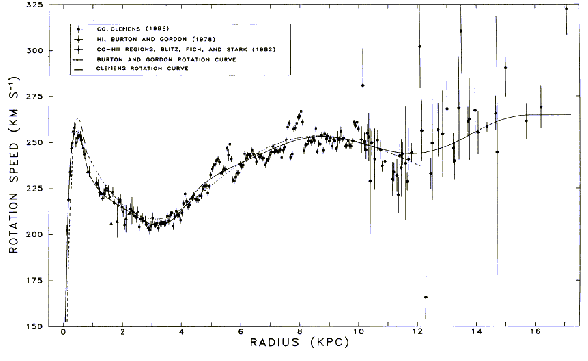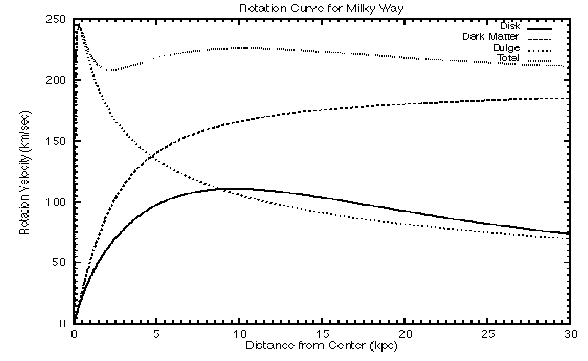



Next: Diffuse matter distribution
Up: Modeling the Gamma-Ray Emission
Previous: The dynamical ambiguity
Contents
Rotation curve
Figure 2.4:
Plots of the rotation speed versus galactocentric radius. The solid line correspond to the polynomial fit [Clemens, 1985].
 |
In order to use the deprojection technique described above it is essential to exactly know the function  .
The rotation curve we assume in the model is the one parameterized by [Clemens, 1985], and scaled for a galactic center distance of 8.5 kpc.
.
The rotation curve we assume in the model is the one parameterized by [Clemens, 1985], and scaled for a galactic center distance of 8.5 kpc.
This curve was determined for the northern disk component of the Galaxy combining the Massachusetts-Stony Brook Galactic plane CO survey with data for HI in the nuclear region, outer CO - HII regions and globular clusters.
The curve, obtained by fitting the data with a polynomial, is shown in figure 2.4.
Figure 2.5:
The observed rotation curve can be decomposed into the individual parts contributed by each component of the Galaxy: the disk (represented by the lowest solid line), the bulge plus the stellar halo (dotted line), and dark matter (dashed line).
 |




Next: Diffuse matter distribution
Up: Modeling the Gamma-Ray Emission
Previous: The dynamical ambiguity
Contents
Andrea Giuliani
2005-01-21


